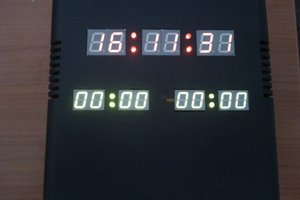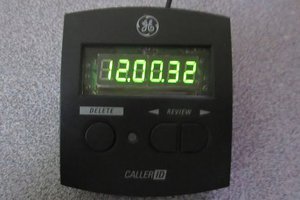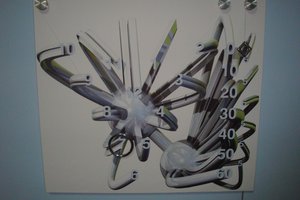The firmware was written in assembler and cross assembled on an Apple II. Debugging was done by removing the CPU and plugging the edge connector into a homebuilt system that had a debug monitor and could download the S-records from the Apple II over a serial link.
Timekeeping is done from the 3.58MHz crystal and a divider chip that outputs 60Hz. The crystal was used so that timekeeping would continue on battery power. One of the first things that I learned was that no matter how carefully I set the oscillator with a frequency counter, the long term clock accuracy wasn't very good. A minute or so a month was as good as I ever got it. The drift changed with the seasons because of the temperature changes.
ESD sensitivity was always a problem. I lived in a dry climate and static shocking the keypad would lock up the CPU. The workaround was to touch the grounded amplifier case before touching the keypad.
The user interface used "soft" assignment of the top row of keys. I had no problems with it, but other people never got comfortable with it.
These issues did not prevent this project from being useful for 17 years.
 Bharbour
Bharbour
 DL101
DL101
 liebman
liebman
 K.C. Lee
K.C. Lee
 Est
Est